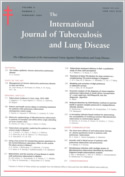
- Ellwood P, Asher MI, Stewart AW and the ISAAC Phase III Study Group The impact of the method of consent on response rates in the ISAAC time trends study. Int J Tuberc Lung Dis. 2010 Aug;14(8):1059-65.
- View Abstract | View Journal page | View Editorial
- Ellwood P, Williams H, Aït-Khaled N, Björkstén B, Robertson C, and the ISAAC Phase III Study Group. Translation of questions: The International Study of Asthma and Allergies in Childhood (ISAAC) experience. Int J Tuberc Lung Dis.September 2009; 13(9): 1174-1182.
- View Abstract | View full article
Methodological Studies
Translations
As ISAAC has used many languages and translations, a systematic analysis of the ISAAC Phase Three translations was undertaken [Ellwood 2009]. In Phase Three 53 language translations were developed which followed standardised guidelines, including back-translating the questionnaires into English to check their accuracy and meaning. Serious deviations for one or more questions were found in seven translations for the adolescents (14%) and in three translations for the children (7%) resulting in exclusion of the data for those questions from the final data set. Thus translations of questionnaires should follow a consistent protocol in global epidemiological research. Cultural norms need to be considered when evaluating back-translations into English, as disease labels are not available in every language, nor are they understood in the same way. Deviations from literal translations of English should be permitted if the intent of the original meaning is retained.
Consent
The relationships between achieved response rates and method of consent for 13–14 and 6–7-year-olds were examined between phases and between English and non-English language centres [Ellwood 2010]. We found that the requirement for active consent for population school-based questionnaire studies can impact negatively on response rates, particularly English language centres, thus adversely affecting the validity of the data. Ethics committees need to carefully consider the usefulness of the use of passive consent in epidemiological studies to obtain high response rates from participants.
Replication of Methodology
Centre reports were completed by Principal Investigators in Phases One and Three which enabled a detailed checking process to be undertaken on the methodology. For the Phase Three Time Trends centres all deviations between Phase One and Three were documented and were categorised: major deviations (centres excluded from the analyses); minor deviations (deviations identified by the use of footnotes in the published tables) and; very minor deviations (deviations accepted and not identified in the publication tables). This information has been collated and a manuscript on “The challenge in replicating the methodology between Phase One and Three of ISAAC” will be submitted for publication in April 2011.
We concluded that with attention to detail and careful recording of methodology, repeated, cross-sectional, epidemiological multicentre studies using the same methodology such as Phases One and Three in ISAAC are feasible and can be achieved throughout the world by people with diverse cultural backgrounds and research experience
